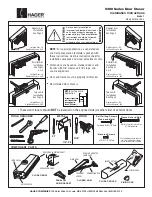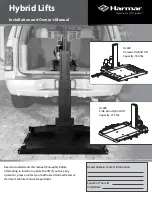
100c
User Manual
26
ch
.
3
functions of the Orion, and to adapt this knowledge to specific applications .
As you can see from this example the Orion’s Arc Mode offers a lot of energy . At higher energies,
this mode is perfect for larger/thicker pieces, deeper weld penetration and for welding highly
conductive metals like silver .
Hands on: Try welding on a flat plate with 30, 50, 75, and 100 Ws of
energy . Stay at max length, and make sure you have a sharp
welding electrode .
Lower energy settings allow for welds on small parts and delicate
features . Having both power and precision allows users to have maximum versatility . Selecting
the proper weld setting is a matter of user preference and application necessity .
Hands On: Try welding at 3, 10, 25 Ws of energy . Make sure you have a
sharp welding electrode .
ENERGY VS . TIME
What happens if the time/duration of the weld is adjusted? As can be seen
in the figures below, the weld time controls the size of the pulse to a
smaller extent then the energy . It also controls the smoothness of the
weld puddle . Because the smoothness of the weld spot is also related to
the internal stress of the weld joint – a smoother weld will have less stress .
It is recommended that the user keep the weld time at max time for most
applications . The top image was welded at 25 Ws with 0, 2, 4, 8ms weld
time . The bottom image was welded at 75 Ws with 10, 20, 50ms weld length .
The two weld parameters (energy and time) can be understood with the following analogies .
Consider the Orion welder to be like a water tower . The amount of water in the tower is like the
energy stored in the welder . Firing the welder is like opening a large valve to let water out . The
length parameter in the welder can be thought of as how long the valve is left open . You can
discharge a very small amount of water by only having the valve open a short time, or you can
allow all of the water out of the tower by leaving the valve open for a longer period of time .
The actual weld puddle can be understood better using the following analogy . Think of the metal
surface as a pool of water in its frozen state . The welder’s arc discharge impacts the “water”
causing it to melt . The arc discharge also causes the now liquid “water” to ripple – similar to when
a stone has been thrown into a body of tranquil water . If the arc energy is removed quickly the
“water” freezes instantly and the ripples remain frozen into the water’s surface . If the arc heat
is removed more slowly, the ripples have a chance to dissipate and go away completely before
the water’s surface refreezes . This is why short weld time causes the weld spot to look rippled .
















































